Monday March 31, 2025
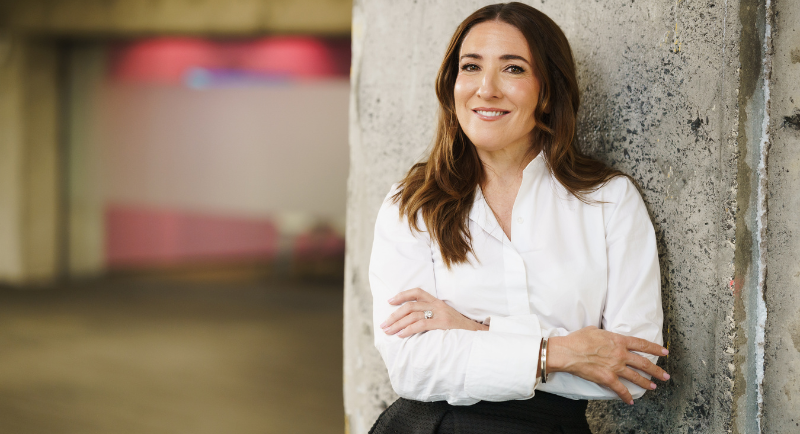
Max launch: Sasha Mackie on championing customers and cutting through the streaming service saturation
“All Killer, No Filler. We have killer content. No filler – those hours of looking for something to watch are gone,” Sasha Mackie, senior director of marketing – streaming, studios & networks, Australia and New Zealand, proudly told Mediaweek, championing Warner Bros. Discovery’s newly launched platform offering in Australia.
Max, launching on Monday, enters a saturated streaming service market with a mix of international and local competitors.
Netflix, launched in Australia back in 2015, currently reigns supreme in Down Under claiming over 30% of the local SVOD market based on revenue and the most app downloads for video-on-demand service, more than double that of its homegrown rivals in 9Now and Stan, according to Statista.
For Mackie, senior director of marketing for streaming, studios and networks for Warner Bros. Discovery Australia and New Zealand, Max has a three-pronged approach to cut through streaming offerings – strong content brands, competitive pricing and a strong understanding of their market.
“Australia is a saturated market. They’re not asking for another service, but they certainly want a better one.
“We know the research. Currently, Australians are spending 42 minutes every day looking for something to watch.
“With Max, you don’t have to spend 42 minutes searching for the gold content because it’s all absolute gold. It’s House of the Dragon, Game of Thrones, Succession, The Last of Us, Harry Potter, DC, Friends and The Big Bang Theory. It’s all incredible premium content.
“The 42 minutes, which is 11 days a year, searching is gone and you can go on holidays. There’s your time back.
“We’re not saying we have the most content. There’s already an explosion of volume. Australians aren’t saying they want more. They want the best.”
Working with a tried-and-true partnership
Charged with making sure Australians know Warner Bros. Discovery is offering the best with Max are media agency EssenceMediacom and creative agency Special, who were respectively appointed earlier this year.
The agencies are no strangers to working with each other as they are currently partners on Uber and Uber Eats accounts, which Mediaweek has previously covered.
For Mackie, this existing partnership between the agencies did not play a direct factor in appointing them to the respective roles, but she acknowledged that “it definitely helps.”
She recalled the pitch process as transparent and quick, aside from costs, for her the main criteria were fit, chemistry, and strategy. “I came out of the pitch from EssenceMediacom and I could absolutely speak to that strategy. I knew we could own it; we knew the challenges that we had to work through.
“Same with Special Group, we wanted to make sure that we came at it from a different place. We wanted to be a brand coming in as the customer champion, so that is what they responded to and that’s absolutely what we wanted to go with.
“But they’re also great people, and who doesn’t want to work with great people.”
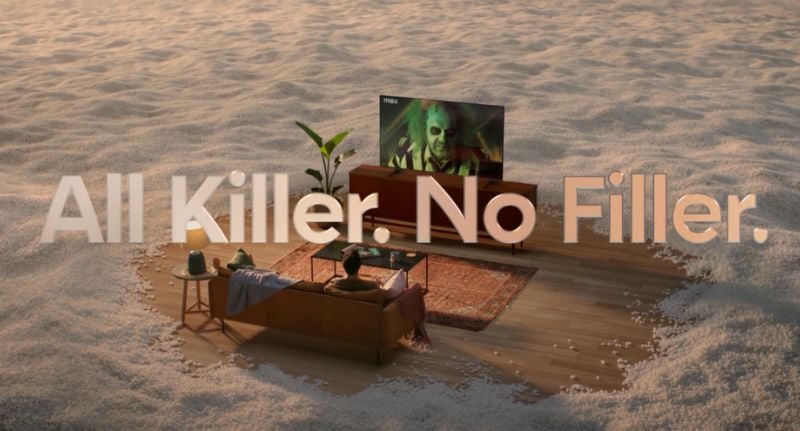
Mackie also revealed she held an offsite with the agency village including Warner Bros. Discovery’s social agency Present Company to create and build a strong bond between the three.
“We had an agency village offsite before work started in January, where we all got clear on how we wanted to behave and move forward together. They hadn’t done one of those before, I’m a big believer in them.
“Along with Present Company, our appointed social agency, they have meetings without us and then they come back with joint resolutions or recommendations. It is a strong team between the three of them and I’m super proud and so excited by the strength that we have within those.”
EssenceMediacom and Special launched the campaign for Max last week across TV, cinema, digital, social, OOH, radio, earned media, influencer, social and content, centred on poking fun at the current over-saturation of streaming products available.

‘Top three is exactly where we want to be’
For Mackie, success is both a global and local goal. “What has been said is that we want to be one of the top three streaming services.
“We know that in Australia, an average Australian has 3.2 subscription services. So, we want to be one of those three. People aren’t adding and adding and adding to four, five or six subscription services.
“For us, the top three is exactly where we want to be.”
“We’re coming out strong. We’re coming out with our best tentpole and we’re launching with The Last of Us, which you can only see on Max.”
Along with a massive nationwide campaign is a big budget to boot and the eyes of the industry and consumers on Mackie.
“Pressure is a privilege. It all reflects in the opportunity and, personally and professionally from a business perspective, all of this comes with a lot of privilege and pressure.”
Mackie said she’s excited to bring Max to Australia because it offers a solution to a clear consumer pain point. She added: “We are coming in as a customer champion on a mission to bring in a new dawn, which is the end of filler frustration.”
Top image: Sasha Mackie
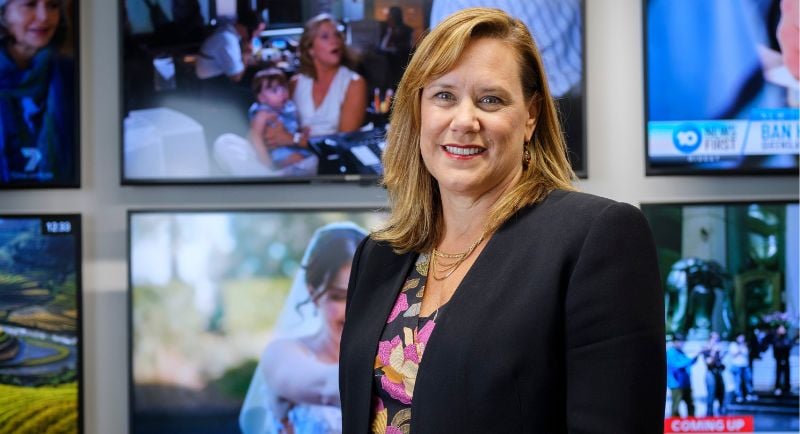
OzTAM appoints Nexxen as latest VOZ streaming partner to boost programmatic trading
OzTAM has added Nexxen DSP to its VOZ Streaming platform, further boosting the industry’s push toward unified, efficient programmatic trading across Australia’s free-to-air broadcaster video-on-demand (BVOD) inventory.
Following a successful trial, Nexxen now joins Xandr and The Trade Desk as an approved demand-side platform (DSP) partner. Together, these DSPs now cover the majority of programmatic trading across Australian media agencies, positioning VOZ Streaming as a must-have service for advertisers looking to optimise their BVOD campaigns.
Launched in November 2024, VOZ Streaming aggregates inventory from Australia’s FTA broadcasters and offers buyers a seamless, multi-broadcaster solution. Advertisers can now de-duplicate reach and frequency, tap into incremental BVOD audiences previously hidden from broadcast strategies, and improve campaign outcomes through features like frequency capping.
Scalable, precision-driven solutions
The addition of Nexxen expands VOZ Streaming’s footprint among independent agencies and brings a focus on scalable, precision-driven solutions.
OzTAM CEO Karen Halligan said, “We are excited to welcome Nexxen to VOZ Streaming, marking a key milestone in VOZ Streaming’s expansion as we continue to deliver on our roadmap, gain market adoption and implement new advancements in the programmatic BVOD landscape. Nexxen’s significant reach, particularly with independent media agencies, combined with our existing partnerships, continues to solidify VOZ Streaming as the go-to service for programmatic BVOD trading.”
Janice Chan, VP, platform & client services, APAC at Nexxen, said the move reinforces the company’s commitment to supporting seamless TV campaign planning and measurement.
“We’ve long been committed to providing advertisers with the tools they need to seamlessly plan, activate and measure TV across channels, and our integration with VOZ Streaming marks a significant step in enhancing our flexible TV solutions – empowering our clients and partners to drive results in the fast-converging TV landscape.”
Further advancements are on the way, including the addition of Google DV360 as an integrated DSP, support for first-party data matching via OzTAM’s privacy-first clean rooms with Snowflake, and the inclusion of SBS On Demand.
With programmatic BVOD investment continuing to rise, VOZ Streaming’s expanding toolkit aims to offer advertisers more control, scale, and audience insight across Australia’s most-watched digital platforms.

‘Ugly’ Phil O’Neil gets real on the difference between FM and AM for broadcasters
Earlier this year, veteran broadcaster Phil O’Neil, known to many as “Ugly Phil”, made a bold move from the FM airwaves of GOLD 101.7 to the AM bandwidth of talk radio titan 2GB.
After decades commanding music formats, O’Neil has stepped into a very different role, hosting the overnight shift on 2GB where conversation, not hits, is the main attraction.
O’Neil’s decision to switch to 2GB wasn’t a spur-of-the-moment choice, rather, it was driven by a desire to stretch his skill set and explore the depth of talk radio.
“Because as a broadcaster, I want to continue to expand my horizons and learn new facets of my craft and also because I’ve got a great interest in talk radio and in communicating in a longer form,” he explained.

From music breaks to marathon monologues
O’Neil’s move into talk radio comes with a significant shift in pace and pressure. Hosting a nightly, five-and-a-half-hour show requires more than a quick wit, it demands preparation, endurance, and depth of knowledge.
“It’s 10 times more work,” he said. “From the minute you get up until the minute you go to bed, you’re constantly working on the show, ideas, observations, interviews. On FM, you don’t have the leeway to expand on thoughts and ideas. Talk radio demands it.”
Each day begins early in O’Neil’s home studio where he conducts and edits interviews, scans newspapers, clips stories, and watches news and current affairs programs to assemble a content-rich show.
“You have to be across everything. I wouldn’t be able to do this show without Dale Sinden, my producer. He’s the right-hand man on the show.”
And while he’s no stranger to broadcasting, O’Neil admits the move hasn’t come without pressure, though the expectations are more personal than professional.
“Probably more pressure from me than from the industry. I don’t feel like I’ve got anything to prove to the industry. I’ve got more to prove to myself. If I’m accepted as a result of what I’m doing, then that’s a bonus,” he said.
Learning in real-time
Despite his radio pedigree, O’Neil is quick to reject the idea that anyone can coast into talk radio.
“It’s not as easy as people think. Having an opinion is one thing, but you need the background to support it, or you’ll get caught out. It’s a learning process between you and the listener,” he said.
That process is something O’Neil takes seriously. He’s made a daily habit of journalling his progress, inspired by the Japanese principle of Kaizen, which translates to “conscious improvement”.
“Every day is a learning process. My wife gave me a book on Kaizen, and every day I write down one thing I’ve learned to make myself better. It’s really helpful,” he said.
He also credits regular feedback sessions with programming veteran and Nine Radio’s head of content, Greg Byrnes, as instrumental to his growth.
“Greg has been far and away the most important person I’ve worked with from a programming position. He’s incredible at pinpointing the areas I need to improve,” O’Neil said.
Overnight ambitions
O’Neil is candid about the long road ahead, calling the overnight shift a “training ground” to master the art of talkback radio.
“I’m miles away from where I want to be, but every single day is another opportunity to fine-tune what I got right, and what I got wrong. I’m learning the skill, and I’m grateful for the opportunity to do it live on air,” he said.
As music formats continue to battle fiercely in the FM space, O’Neil’s move is a compelling cross-format pivot, one that speaks to the evolving opportunities in Australian radio and the hunger for new challenges, even for seasoned broadcasters.
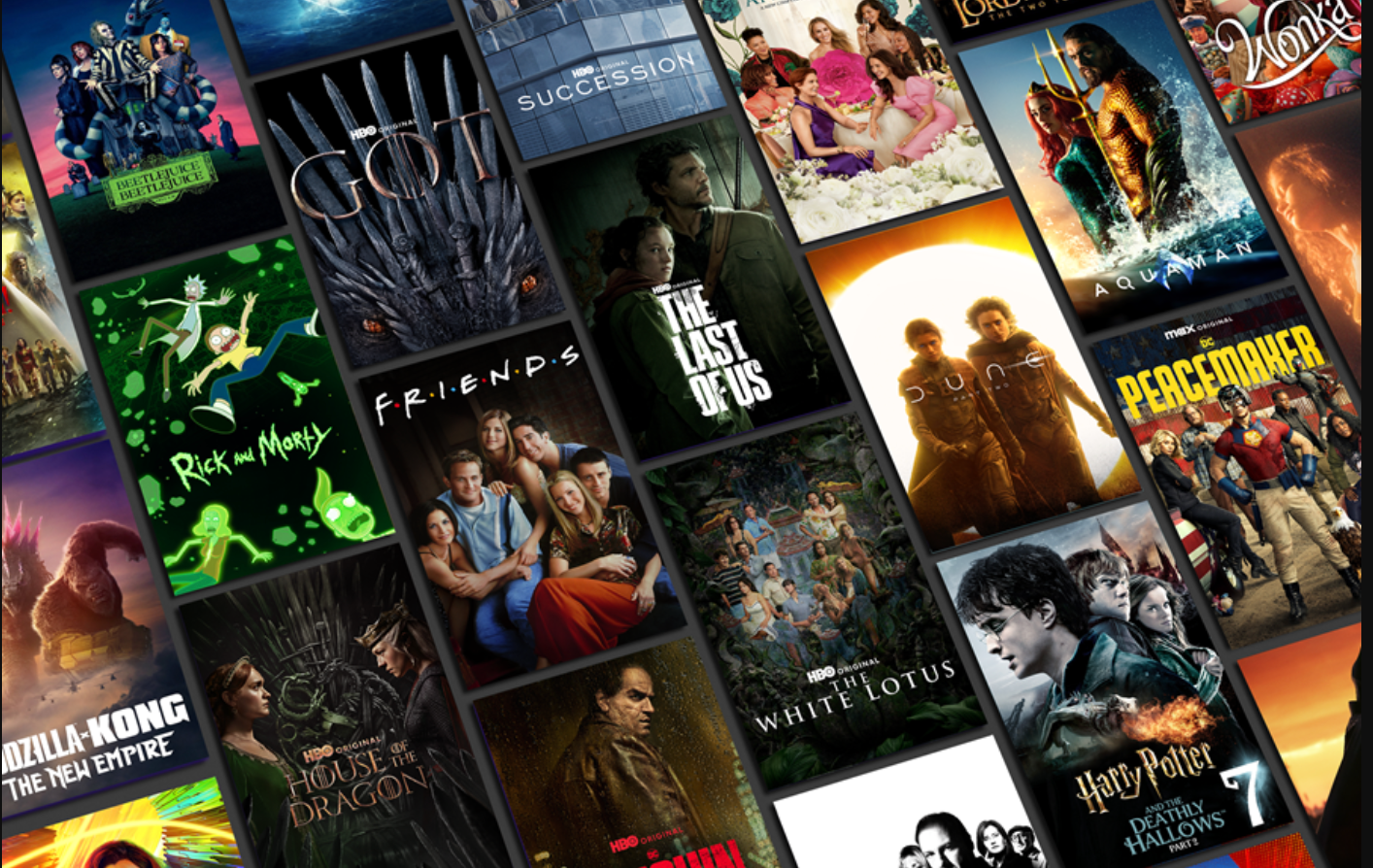
Max launches in Australia, bringing HBO, Warner Bros., Discovery under one streaming roof
Max, Warner Bros. Discovery’s flagship streaming platform, has officially launched in Australia today, bringing together some of the world’s most recognised entertainment brands into one premium destination.
The new service is home to HBO’s award-winning programming, Warner Bros. blockbusters, DC Universe titles, Discovery’s real-life entertainment, kids’ favourites, and more. Available now via www.max.com, Max can be accessed across major mobile, tablet, gaming, and connected TV devices, with three pricing plans and a special introductory offer for early subscribers.
Among the biggest drawcards is the exclusive premiere of season two of The Last of Us on April 14, one of HBO’s most talked-about global hits. Other premium HBO titles available from launch include Succession, Euphoria, The White Lotus, House of the Dragon and The Penguin, as well as Max Originals such as And Just Like That… and The Pitt.
In addition to scripted hits, Max will serve up a deep library of entertainment across genres. Blockbusters like Barbie, Wonka, Beetlejuice Beetlejuice, and Twisters join classics like Casablanca and Gone with the Wind. Franchises including Harry Potter, The Lord of the Rings, and the DC Universe sit alongside long-running favourites like Friends, The Big Bang Theory, and Rick and Morty. Local audiences will also recognise popular Discovery content such as Aussie Gold Hunters, Outback Opal Hunters, and Deadliest Catch, as well as reality staples like 90 Day Fiancé and Say Yes to the Dress.
JB Perrette, CEO and president of global streaming & games at Warner Bros. Discovery, said the launch continues the company’s global streaming expansion.
“While the Max brand may be new to Australians, the programming engines at the heart of it, including HBO, Discovery, Warner Bros., Harry Potter, the DC Universe, are already loved by audiences here,” he said.
“Now for the first time, these brands come together alongside additional premium content from WBD’s portfolio, to offer a distinct streaming proposition for local fans.”
James Gibbons, president of APAC at Warner Bros. Discovery, said of the launch, “From the world’s most talked-about series, iconic franchises and hit blockbuster movies to compelling factual programming, reality favourites and kids’ content, Max offers thousands of hours of premium entertainment in one new streaming home.’
“With three different pricing plans, broad device capability, and several distribution partners for maximum reach, our deep vault of content has never been more accessible for Australians,” he added.
Read our chat with Sasha Mackie, senior director of marketing – streaming, studios & networks, Australia and New Zealand, here.
Plans and pricing
Max is available via three plans:
• Basic With Ads: Stream on two devices in full HD.
• Standard: Stream on two devices in full HD with up to 30 downloads for offline viewing.
• Premium: Stream on four devices in 4K UHD with Dolby Atmos (where available), and up to 100 downloads.
Australians who sign up by 30 April, 2025, will receive a special promotional price for the first 12 months, available across all plans. Full details are available at www.max.com.
The platform also offers a personalised, user-friendly experience, including tailored recommendations, user profiles (with kid-friendly options and parental controls), and convenient features such as “Continue Watching,” favourites, and offline downloads (depending on plan).

Seven Network reshapes communications leadership with key promotions
The Seven Network has refreshed its communications division, strengthening its leadership across key pillars of the business: entertainment, news, sport and digital. The changes are part of a broader strategy to align communications with audience growth, content leadership and commercial priorities.
The appointments follow the elevation of Kate Amphlett to director of communications, a move the network believes reinforces its focus on integrated messaging across its traditional and digital platform.
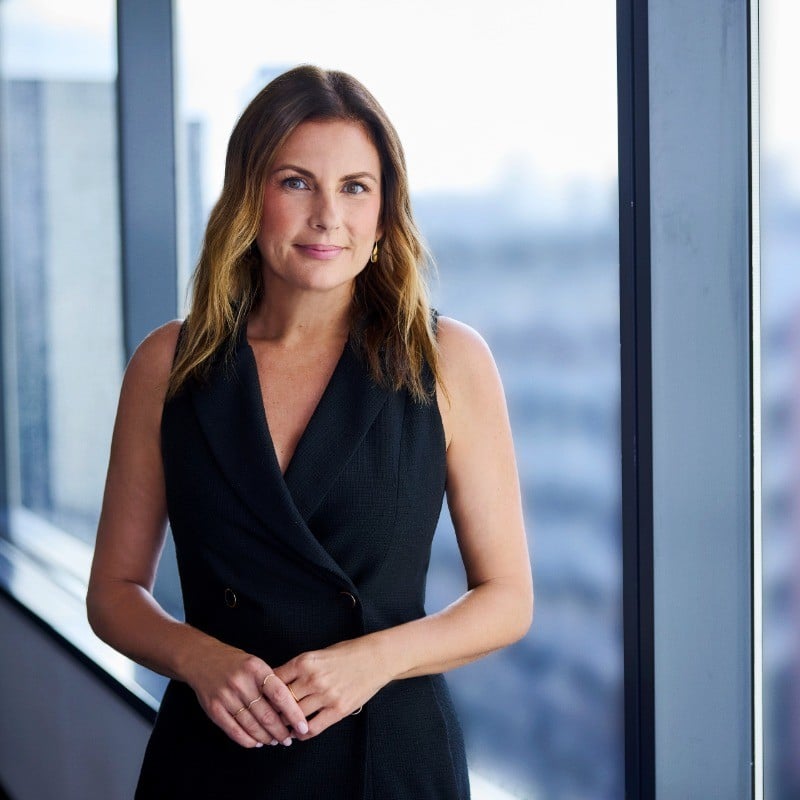
Kate Amphlett
“I’m happy to share that I’ve started a new chapter at Seven Network as Director of Communications,” Amphlett said on LinkedIn.
“I’m incredibly proud to work alongside a talented and dedicated team as we continue to drive results and audience for the best entertainment, news and sports brands in the country.”
Amphlett brings more than 20 years’ experience across television publicity and strategic communications.
Before stepping into the director role, she served as national publicity manager, delivering high-impact campaigns for some of Seven’s most recognisable franchises.
Her earlier experience includes senior roles at Network Ten and agency-side, giving her a comprehensive view of the evolving media and advertising landscape.
Brittany Stack to lead news, public affairs, partnerships and community
Stack has been promoted to head of communications – news & public affairs, partnerships and community, reflecting the growing importance of reputation, trust, and local connection in Seven’s news strategy.
“I’m happy to share that I’m starting a new position as Head of Communications – News & Public Affairs, Partnerships and Community at Seven Network!” Stack posted on LinkedIn.
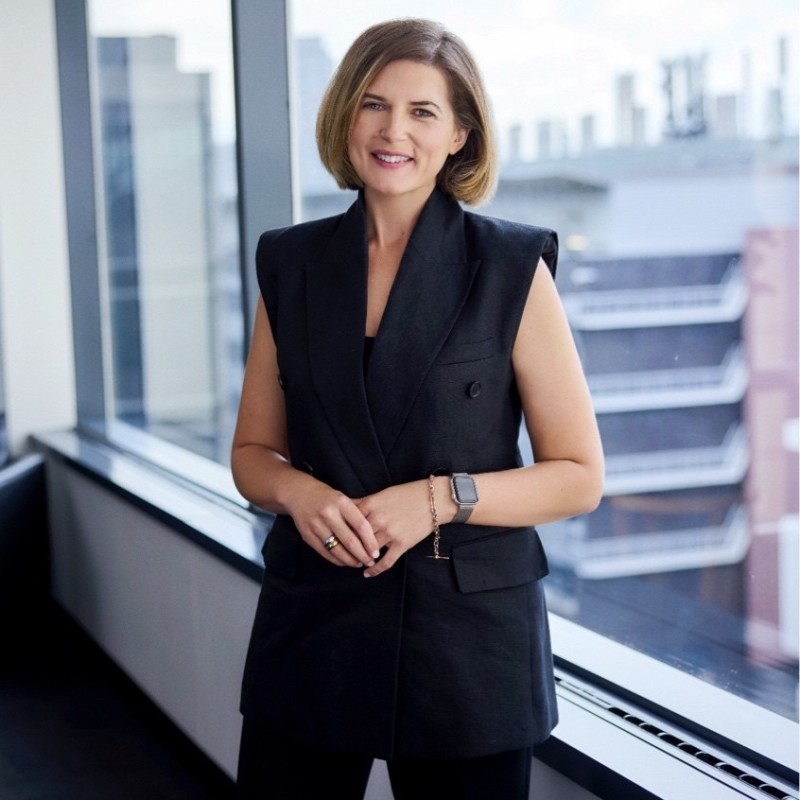
Brittany Stack
In her new role, Stack will lead communications for 7NEWS, Sunrise, Weekend Sunrise, The Morning Show, and 7NEWS Spotlight, in addition to driving the network’s partnership and community communications strategy.
Stack previously served as national publicity manager for news and public affairs.
A former journalist, she brings a newsroom sensibility and audience-first perspective to her communications leadership, underpinned by experience in both public and private sector media environments.
Broader promotions across communications team
The restructure also sees a new leadership layer across key content verticals:
• Alison Booth becomes head of communications – entertainment and 7plus, leading strategy and teams working on titles including Australian Idol, The Voice, The 1% Club, Home and Away, and the growing 7plus First slate of international titles. Booth’s remit also includes Seven’s digital AVOD platform, 7plus, critical to the network’s streaming-led growth ambitions.
• Emma Francis is promoted to head of communications – sport, overseeing brand and publicity strategy across Seven’s extensive sports portfolio, including the AFL, cricket, Supercars, horse racing, and international properties such as the NFL.
Rounding out the Seven Network’s communications team are:
• Callum Griffin, Senior Communications Specialist – News & Public Affairs
• Kristina Echols, Senior Communications Specialist
• Navjot Kaur, Senior Communications Specialist
• Jane Macleod, Communications Specialist
• Jason Antill, Communications Specialist
• Jono Lister, Communications Specialist
• Laura Allen-Ducat, Communications and Marketing Manager, QLD
• Sarah Peatling, Senior Communications Specialist – Sport (Acting)

Fast, Fierce, and Flawed: What marketers can learn from election campaigns
By Shai Luft, co-founder and chief operations officer at Bench Media
Election campaigns in Australia have always been a high-stakes sprint with big budgets, tight timelines, and a rigid game plan that rarely shifts once the race begins. But in 2025, that approach is a liability.
Voter behaviour has changed dramatically, just like consumer behaviour. Sticking to a fixed plan when sentiment can shift overnight is like launching a brand campaign and refusing to optimise, even though the data is clear. It’s outdated, ineffective, and a surefire way to burn through millions.
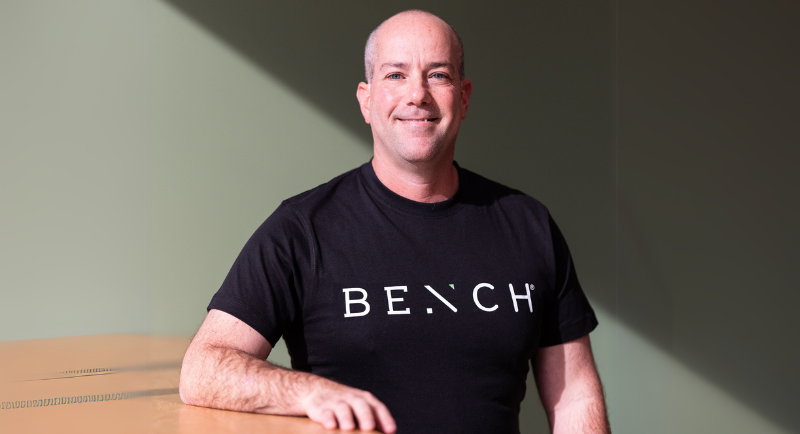
Shai Luft
Stop blanket bombing, start precision targeting
Most election campaigns still rely on the outdated ‘spray and pray’ approach—flooding the market with generic messaging about health, education, and the economy, hoping something, somewhere, eventually sticks. But today’s voters, like consumers, expect relevance.
The smartest campaigns take a page from modern performance marketing—using granular data to serve the right message to the right voter in what feels like a personalised way. Swing voters in suburban battlegrounds care about cost-of-living pressures, while younger, progressive audiences might be more concerned with climate policy. The one-size-fits-all messaging of the past doesn’t work, not for politics and not for brands.
Influencers: the endorsements that actually matter
The days of party leaders posing for photo ops at construction sites or primary schools are over. Staged PR stunts feel outdated. Political parties are waking up to influencer marketing—something brands figured out years ago but still under-utilise in campaigns.
With ad blockers, privacy regulations, and growing ad fatigue, consumers trust informal marketing channels more than ever. Gen Z and Millennials, which now outnumber Baby Boomers for the first time in an election, expect brands to meet them where they are, with messaging that’s personal, relevant, and authentic. They don’t want a hard sell; they want brands that listen, engage, and show up in ways that matter to them.
Move fast, test often, adapt instantly
Election campaigns have traditionally been slow-moving beasts, locked into fixed media plans with little flexibility. But in today’s landscape, that’s a recipe for irrelevance.
Just like modern brand campaigns, political marketers need to embrace rapid testing, real-time data analysis, and constant iteration. The best campaigns aren’t guessing what works, they’re A/B testing, tracking engagement shifts in different electorates, tailoring creative messages based on audiences and doubling down on what cuts through. If your campaign isn’t moving at the speed of the internet, you’re already behind.
Beyond party spending: the rise of lobbyist ad blitzes
Political advertising isn’t just coming from the parties anymore. Lobbyists and industry groups are flooding social media with aggressive, agenda-driven messaging designed to shape voter sentiment. Just look at the Teal movement in the last federal election or the ‘No’ referendum campaign, both proof that external players can shift the narrative in a big way.
This mirrors how brands today aren’t just battling direct competitors but also industry disruptors and cultural movements. Marketers can’t afford to ignore the noise—control of the conversation isn’t a given. It’s earned through sharp messaging, strategic placements, and, most importantly, speed.
Run your campaign like an election sprint
Political marketing teams need to stop thinking like bureaucrats and start acting like nimble challenger brands. Be bold, be fast, and be relentlessly focused on what’s working.
Election campaigns are six-week sprints where messaging, audience insights, and data points must be constantly evaluated and fed back into agile campaign changes. The brands that take this same approach—lean, data-driven, and audience-obsessed—will win. The ones clinging to tired playbooks? They’ll be left wondering where their loyalists went.
Top image: Shai Luft
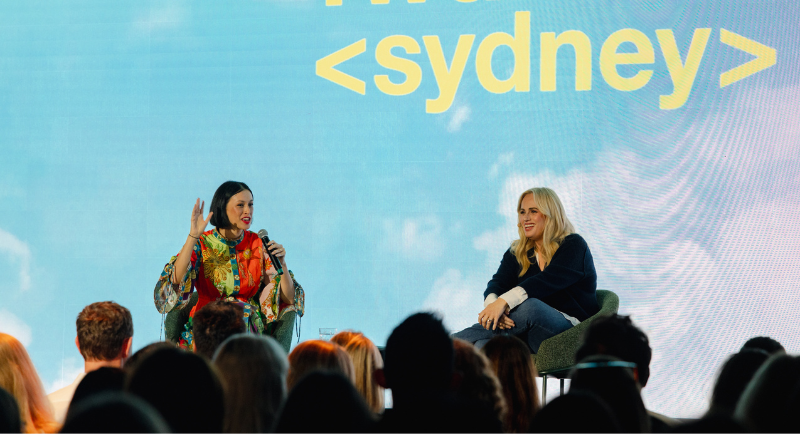
Rebel Wilson on evolving her brand throughout her career
Rebel Wilson revealed that she branded herself as the female version of American actor Jonah Hill at auditions in her early days in Hollywood.
In a fireside chat with Karen Ferry, the actress shared how she established, evolved, and moulded her brand throughout her career to marketers at Intuit Mailchimp’s FWD: Sydney conference on Wednesday.
Wilson recalled: “I only knew this one guy, Josh, who had gone to America and got booked a job, and he said: ‘whatever you do, you’ve got to sell yourself like nothing else.’ In Australia, we have a culture to be very humble. If you go into a Hollywood movie studio and do that, they will think you’re not very good. They won’t see that as being humble.”
“I thought, I’ll go over to Hollywood, and I’ll just say I’m the female Jonah Hill. It was a very small box, but that’s me. I felt like an idiot doing it. But I sold myself like you wouldn’t believe and on the second day in America, I had Jonah Hill’s agents, which was crazy.”
She shared that she continued to introduce herself to movie studios as the female Jonah Hill and within a few months booked herself a small part in 2011’s Bridesmaids after losing out to Melissa McCarthy.
“I just was added into scenes with no real lines and had to say stuff to get me in the movie. I was only in four scenes in the movie. Luckily on the back of Bridesmaids, I booked six movies as soon as that came out, and one of which was Pitch Perfect, which ended up being, like, the biggest blessing to me.”
Moulding her brand amid her life changes
Wilson also spoke about her 2020 Year of Health journey which she shared on her Instagram. During that year, she worked on her health and wellness, dropping 35kgs.
However, her decision to lose weight was met with judgement from her own team. “They basically said to me, ‘you’ll lose your whole fan base and your whole career if you do that.’
“For me, I didn’t want to be unhealthy. Otherwise, what was my other option? Be like a performer like John Candy, who dies an early death, and is hilarious, but is so unhealthy.”
She opted chose to live a healthier life and said that while the decision to give up the lucrative brand of the “fat, funny girl” was a risk, it has since allowed her to play different roles.
“I’ve just played the love interest to Kiefer Sutherland,” she shared.
Protecting her brand
Wilson also spoke candidly about her case against Bauer Media in which she sued the company for defamatory articles, which were published in 2015 around the time Pitch Perfect 2 was released.
“At 35 years old, I was the reigning comedy queen in America at that point and then I had these articles that came and they attacked the one thing that was so dear to me, which was my authenticity.”
Wilson told attendees the articles claimed that everything about her life was made up and a lie. To protect her brand, she took the media company to court to prove her case.
After her case, Wilson said her Australian agent told her she “walked a little taller” after going through the legal battle.
“I was someone who was always afraid to fight back or to fight back the negativity and I hadn’t had much negativity. That was like the first big thing.”
“It is very hard to have negative press, whether you’re a brand or a person, and you’ve just got to cling to what you are about.
“You’ve just got to stay true to what you are and know that always the cream always rises to the top in those situations. You have a great company, a great product, at the end of the day, it’s going to rise to the top.”
The freedom in making brand deals as Rebel the brand
Wilson revealed that she didn’t want to brand herself and wanted to follow in the steps of Toni Collette, who she described as a “chameleon actress”.
“I didn’t want to be what’s called a brand or a personality in America and then I realised you make a lot more money doing it. My agent has The Rock and he makes $20million dollars a film. I realised there’s something to it by expressing more of your real self and your personality to everyone.
“There used to be a criticism of that you’re not there for a true artist. I do multiple multi-million-dollar brand deals every year for different companies and to me that is a luxury because then it allows me to come to Australia for 18 months and work on The Deb, which was my passion program that started from my scholarship program.
“It’s like that kind of stuff that allows me now to do more interesting things but yeah, it was weird at first. I never wanted to be a brand and now I just gradually began accepting of it because actors who have a brand earn like a hundred times more money.”
Top image: Karen Ferry and Rebel Wilson
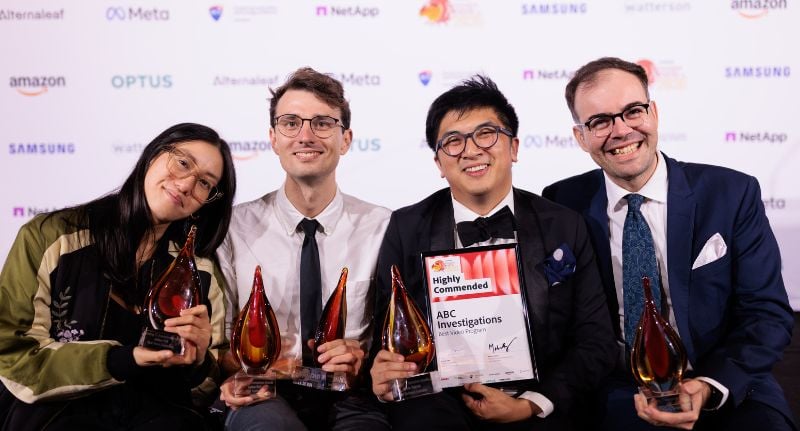
Julian Fell, The Age/SMH and CommsDay dominate The 2025 Lizzies
The 23rd annual Samsung Australian IT Journalism Awards, affectionately known as The Lizzies, returned on Friday 28 March with a celebration of Australia’s best in tech, comms, and science reporting.
Held at Doltone House, Jones Bay Wharf, the night brought together journalists, publishers, industry insiders and comms leaders under a floral-themed dress code for cocktails, canapés and a packed awards program.
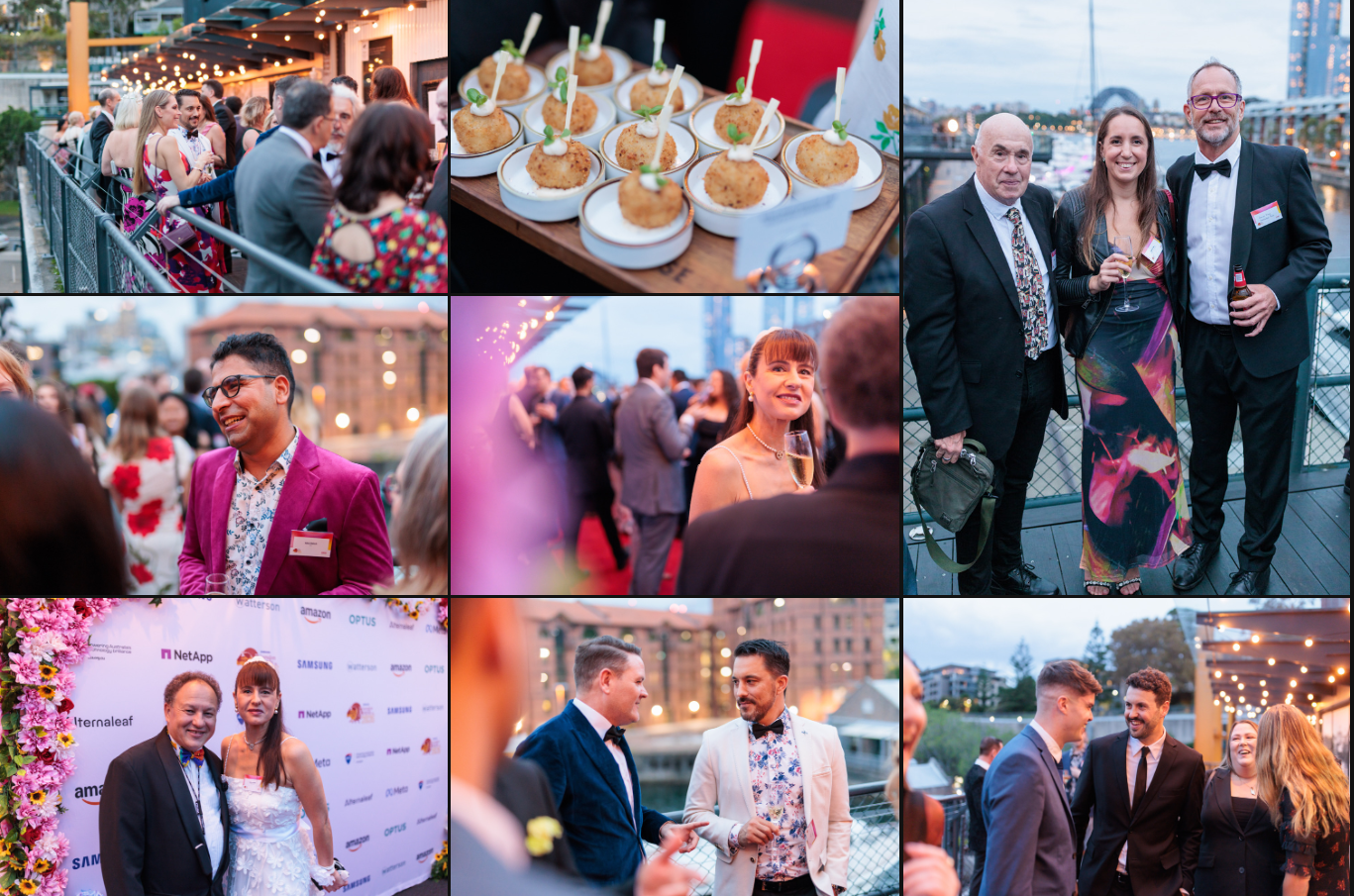
Julian Fell scores a Lizzies hat trick
ABC journalist Julian Fell emerged as the night’s biggest individual winner, taking home three honours:
• Gold Lizzie for Best Journalist
• Best Security Journalist
• Best News Journalist
Fell’s standout reporting across technology security and general news categories positioned him as a dominant voice in the national IT and digital journalism space this year.
Fairfax mastheads score big
It was also a strong showing for The Age and The Sydney Morning Herald, with Tim Biggs and David Swan winning Best Consumer Technology Coverage for their standout work exploring how everyday Australians engage with innovation.
Meanwhile, a powerhouse collaboration across The Age, SMH, The Australian Financial Review and The Sydney Morning Herald took home Best News Coverage, recognising the work of Kate McClymont, Nick McKenzie, Max Mason, and Tess Bennett.
CommsDay founder recognised as Pioneer of IT Journalism
Grahame Lynch, founder and editorial director of CommsDay, was awarded the prestigious Pioneer of IT Journalism award, marking his 30 years of contribution to the sector.
Lynch received heartfelt recognition from current and former journos, industry peers and even Federal Minister for Communications Michelle Rowland, who said: “As Communications Minister, my day usually begins with scrolling through your publication to get across the latest. CommsDay is the authoritative source of commercial, regulatory, political and tech news, thanks to your editorial leadership.”
New categories reflect industry evolution
Two new award categories debuted this year, recognising the expanding scope of the tech and science media landscape.
• Smriti Mallapaty of Nature won the inaugural Best Science Journalist award.
• The first Top Newsmaker Award, presented by industry veteran Len Rust, went to IREN co-founder Daniel Roberts.
For the full list of winners head here
Pictured: Gold Lizzie winner Julian Fell and colleagues
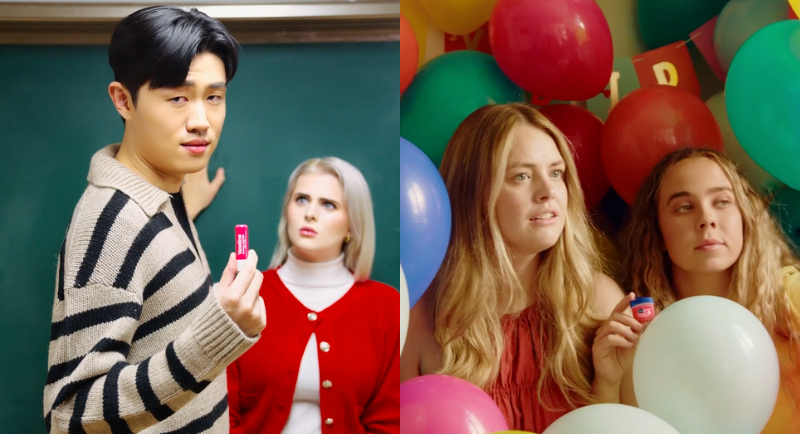
Vaseline launches short film campaign with creators from Australia and South Korea via Amplify
Vaseline has launched a new short film campaign on TikTok showcasing its lip care range featuring filmmakers from Australia and South Korea.
The campaign, developed with creator agency Amplify, puts Vaseline to the test in fun, unexpected ways.
Among the first creators involved in the campaign include Mon & Han (@monandhan) and Molly McCrann (@moldogaa) in Australia and Videographer YCN (@ycn_videographer) and Jin and Hattie (@hatjin) in South Korea. These creators have brought their distinctive storytelling styles to the films, blending creativity and humour to showcase Vaseline’s long-lasting moisturisation benefits in unique ways.
The content features characters in unexpected, extreme scenarios – such as being stuck in a freezing cold jail cell, or being challenged to blow up a 1000 balloons – artfully showcasing Vaseline’s lip care range as it comes to the rescue with its long-lasting moisturisation of up to 72 hours.
The campaign has already gained strong traction, with the films garnering over 300,000 organic views in 48 hours, demonstrating the ability of quality content to engage audiences beyond existing brand reach.
It also includes a film school initiative, offering aspiring filmmakers in Australia the opportunity to participate through a grant-funded competition. Emma Smith and Damon van der Schuit, two filmmakers and actors from Alice Springs have been chosen as the winners for Australia with their short film now in production. Honourable mention went to Lara Brighton, a Sydney filmmaker who also submitted a playful and pop cultured soaked entry. This initiative reinforces Vaseline’s commitment to nurturing emerging talent and fostering creative storytelling.
“Audiences are looking for entertainment, not ads. This campaign has been an exciting opportunity to showcase our lip care range in novel, engaging ways,” Hui Su Li, assistant skin care manager at Unilever International, said.
“The process of co-creating with film producers, creators and creative minds from TikTok and Amplify has been extremely synergistic, and we’re looking forward to seeing how audiences connect and engage with these stories.”
Hayley Adams, group operations and growth manager at Amplify, said: “This campaign has been about creating stories that resonate rather than just showcasing a product. Working with Vaseline to bring fresh creative perspectives to life has been a rewarding process, and we’re excited to see how audiences respond.”
The campaign is being launched in true drama series fashion: with teasers, films, behind the scenes and reaction videos already live. Check out the @VaselineANZ and @Vaseline_Korea TikTok profiles for the latest updates.
Top image: Jin & Hattie, and Mon & Han
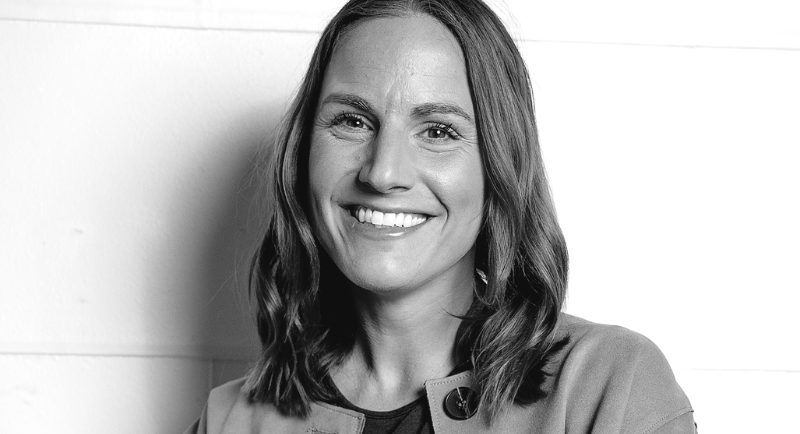
The Pistol wins JURA media account
The Pistol has won the media account for Swiss coffee machine maker JURA.
The independent agency’s remit includes paid media, including search, social media, programmatic and out-of-home, along with project-based creative, for JURA Australia.
The Pistol will also support the brand across its trade and retail partnerships. In winning the account, the JURA Australia team was impressed with the agency’s focus on growing the business’ national market share, while also boosting its brand awareness with Australian shoppers.
JURA is one of the world’s leading coffee machine manufacturers, pioneering innovation in appliance manufacturing since 1931. Starting with a range of electrical domestic appliances, JURA focused its energy on coffee in the 1980s, launching Switzerland’s first espresso/coffee machine. In the 1990s, the business expanded globally, introducing a range of modern coffee and espresso machines. Today, JURA coffee machines are available worldwide and are well-known for their simple operation, stunning design and high-quality coffee.
“We really wanted a digital marketing partner with a deep understanding of data, strategy and insights and how they can be used to drive growth and revenue,” George Liakatos, JURA Australia managing director, said.
“The Pistol team immediately impressed us with their ability to understand the customer journey and the importance of brand positioning in market. Our partnership with The Pistol is a critical part of our overall growth strategy as we look to solidify and expand JURA’s Australian market share.”
Jamie Nosworthy, The Pistol CEO, said: “JURA’s vision for a long-term marketing partnership directly aligns with our business values. Now more than ever, brands have a strong awareness of the need to leverage measurement and insights to inform their digital marketing. We want to work with brands that are invested in providing a great customer journey and using connected commerce to offer a seamless path to purchase.
“JURA is committed to working closely with our team to grow not only their sales performance but their customer experience. Their passion for increased market share aligns with our goal of driving accelerated business growth for our clients.”
Emilia Chambers, The Pistol’s head of strategy, said: “We’re delighted to be working with the JURA Australia team. From the outset, it was clear there was strong synergy between our businesses, with a shared alignment of our goals. We’re committed to helping boost awareness of the JURA offering with Australian coffee lovers and working closely with the team on their growth ambitions.”
JURA joins The Pistol’s growing client stable, which includes DECJUBA, Vitasoy, Mars Petcare, The Brandbank Group, Prime Super, Melbourne Symphony Orchestra and Bosch eBikes, among others.
Top image: Jamie Nosworthy
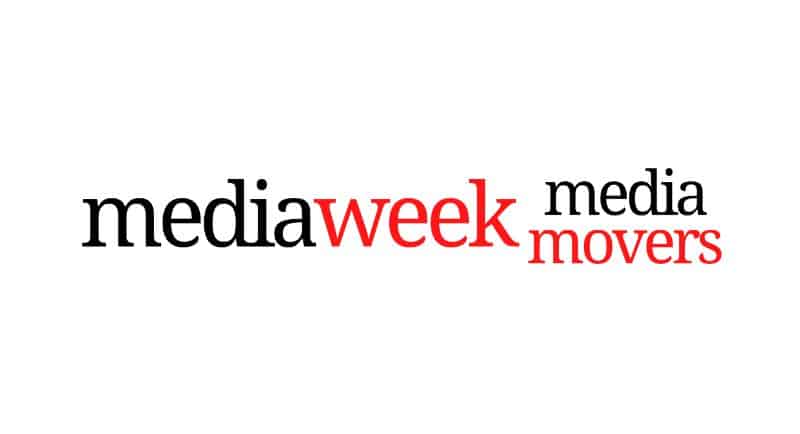
Media Movers: DDB’s Andrew Little exits as Priya Patel and Matty Burton step up, Tony Quarmby, Rachel Page and Antonia Glezakos
Mediaweek’s Media Movers charts the biggest people moves in the industry over the past week.
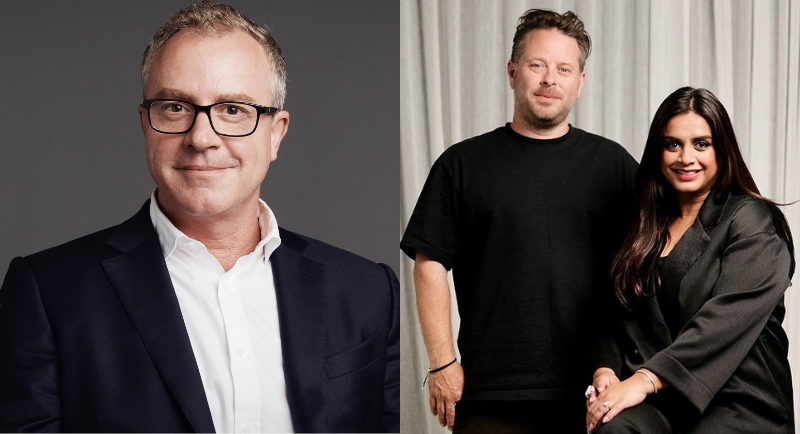
Andrew Little and Matty Burton and Priya Patel
DDB Group AUNZ has unveiled new leadership with Andrew Little, regional president, stepping down after 25 years and New Zealand’s Priya Patel and Matty Burton taking on expanded roles.
Little started as managing director of DDB Melbourne and was promoted to CEO DDB Group Australia in 2013. This was followed by a promotion to president and CEO ANZ in 2021. His partnerships with Westpac (13 years), McDonald’s (56 years), Coles (two tenures) and Volkswagen (27 years) mark some of the most consistent and successful agency-client relationships in Australia.
Stepping up to take expanded roles are New Zealand CEO Priya Patel and New Zealand chief creative officer Matty Burton taking on expanded roles in the region effective April 1st. Patel extends her responsibility to regional CEO with Burton moving into the newly created role of chief creative officer for DDB Group AUNZ.
Tony Quarmby has departed Tourism NT after seven years with the tourism body as chief marketing officer.
A spokesperson said in a statement: “After seven successful years leading the destination marketing function of Tourism NT, Tony Quarmby has left the business to seek new challenges and opportunities.
“This provides a new phase for tourism in the Northern Territory and an opportunity to refresh its approach to marketing the destination.”

Rachel Page
OMD has appointed Rachel Page as managing director of OMD Melbourne.
She began her 28-year career as a media agency junior and returns agency side to join OMD Melbourne as a well-respected and proven leader in transforming teams, brands, partnerships and culture to drive commercial outcomes with Seven West Media and Yahoo.
Page’s appointment follows the promotion of Antonia Glezakos, who served as managing director for the last four of her 16 years with OMD, has been promoted within Omnicom Group to executive partner of Smith St.
IAB Australia has appointed Microsoft Advertising’s Nicole Prior as chair of its executive technology council (ETC) and has also become the ETC representative on the IAB Australia board.
Prior, who is head of media and adtech solutions APAC of Microsoft Advertising, replaces Adele Wieser, MD of Index Exchange, who has completed her two-year stint as chair.
Prior brings almost thirty years of experience in the industry to her role working across agency, adtech and publisher side. Previously she worked with Xandr, UM Australia, Mediacom, Starcom and Seven Network.
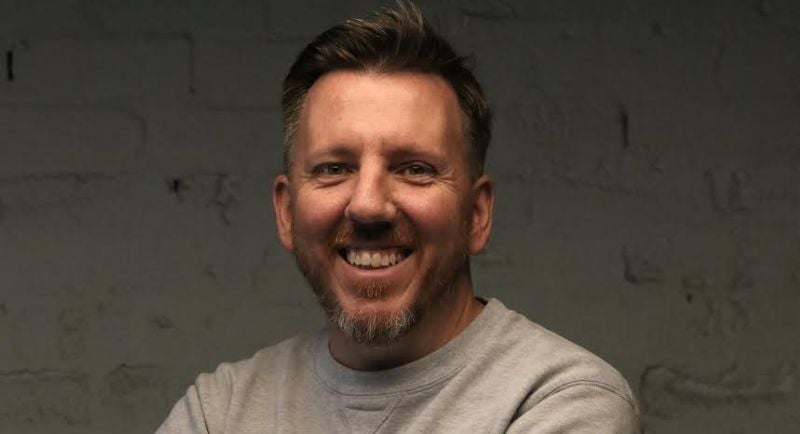
Pete Mountford
Independent agency AFFINITY has announced the promotion of Pete Mountford to the role of creative lead, following a standout year since joining the business in 2024 as senior copywriter.
With more than two decades of experience spanning digital and traditional agencies, including Leo Burnett and R/GA, Mountford has led creative work for major brands such as Telstra, ANZ, Google, and McDonald’s. His work has been recognised at top-tier shows, including the Webbys, Caples, ADMA, and AWARD.
carsales has appointed Craig Fraser as managing director, following the departure of Paul Barlow after more than 15 years with the business.
Fraser joins the CAR Group Global Leadership Team and steps into the role having joined carsales in 2008. He has since held a number of senior leadership roles, most recently serving as Executive General Manager – Automotive, Corporate, Industry & Leisure.
We Are Social has promoted Suzie Shaw to Asia-Pacific CEO and launched its new offices in Bangkok, Thailand.
Shaw moves into the new position after 10 years as CEO of We Are Social Australia. As APAC CEO, Shaw will be responsible for driving the creative agency‘s growth across Asia-Pacific, fostering regional partnerships, and strengthening capabilities.
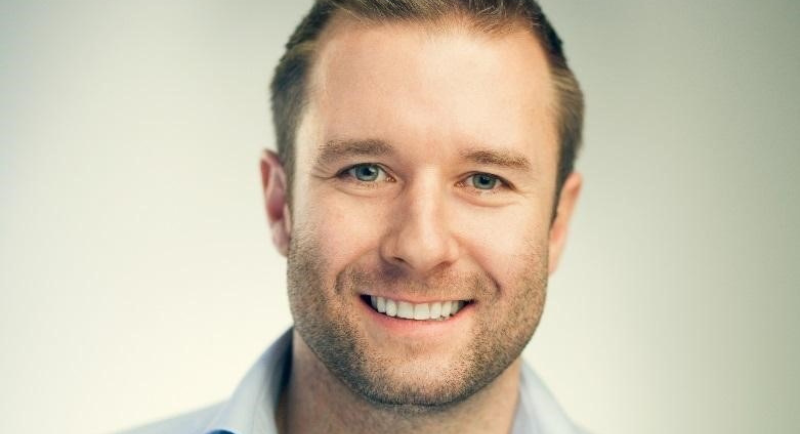
Zac Pinkham
Samba TV has appointed Zac Pinkham as senior vice president of international, to oversee the EMEA and APAC business to drive growth and expand market share in key international regions.
His appointment at the company providing AI technology for media analytics comes on the heels of Samba TV’s strategic acquisition of Semasio and expansion to 50+ markets including strong representation across Europe, MENA, APAC, and the Americas.
Gabi Revell and Jarryd Haefele have combined their 22 years in the creative and media industries to launch a new creative agency, Foundry
Revell and Haefele’s new venture aims to bring an innovative and fresh approach to branding and design beyond a typical design agency.
The Australian Influencer Marketing Council (AiMCO) has appointed content creator, Brad Canning, as the chair of its new Influencer Advisory Sub-Committee, dedicated to advocating for its influencer and creator members.
Canning will oversee the sub-committee, while acting as a conduit between the body and the AiMCO board. He will also work closely with AiMCO managing director, Patrick Whitnall, to help develop and advance the sub-committee’s efforts.
TRA has welcomed new appointments to its Sydney team ahead of its third anniversary in market.
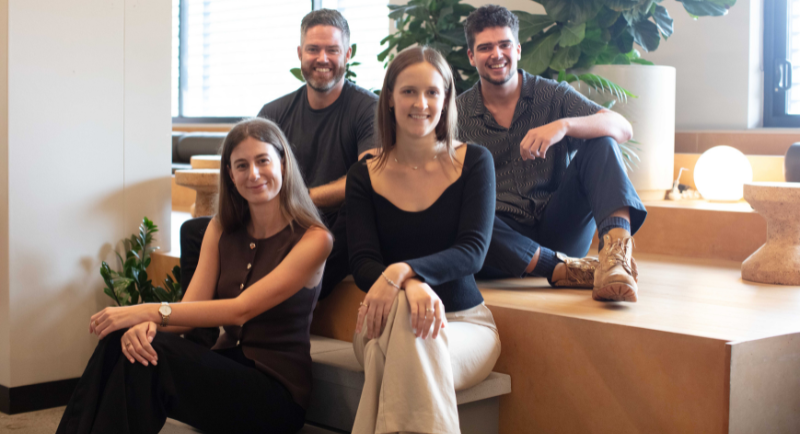
Top row David Busfield, Alex Mansfield. Front row Tia Agnew, Melouise Hucker.
Joining the research and insights agency is researcher and strategic consultant, David Busfield who steps into the role of business director and will be responsible for several of TRA’s growing partnerships over the FMCG, tech and financial services sectors.
Busfield joins from Kantar where he held the position of group director, leading one of Sydney’s client service teams and some of the largest client relationships and projects across brand strategy, innovation and creative effectiveness.
The agency also welcomed three research consultants from Fifityfive5, part of Accenture Song: Melouise Hucker as senior consultant (previously senior account director); Tia Agnew as senior consultant (previously senior consultant); and Alex Mansfield as cultural/qualitative consultant (previously cultural insights).

Tom Gleeson never watched Taskmaster… then he became the boss of it
Before Tom Gleeson became Australia’s official Taskmaster, he had absolutely no idea what the show was.
None. Zip. Nada. “When I was first asked, I had never watched the show,” he admits. “I was well aware of its reputation, but I just hadn’t gotten around to watching it.”
Not that this minor detail stopped him from saying yes.
Naturally, Gleeson did some homework. “I thought, ‘Well, I better sit down and watch what this show actually is.’ And I watched about four or five seasons,” he says.
But in true Gleeson fashion, he stopped once he’d cracked the code. “I thought, ‘Oh, I get it. Greg [Davies] is high-status. He’s in charge.’ Whatever he says goes, and that’s all I wanted to know.” From there, he did what he does best: “I thought the only thing that mattered was my status… So playing high status, to me, was playing to my natural game.”

How Gleeson ended up in the big chair
While most comedians dream of chasing gigs, Taskmaster Australia found Gleeson.
“I mean, I got asked to do it,” he says, with signature bluntness. “I didn’t know who else would get to be the Taskmaster, so I was uniquely placed.” And in a moment of accidental internet magic, Gleeson’s reputation had already been building in Taskmaster fan circles. “For years, I’ve received messages on social media from people saying that if there was an Australian version, I should host it. That’s actually how I learned about the show.”
It’s now clear Gleeson was born for the role. He’s got the dry authority, the relentless glare, and, crucially, the comedic muscle to toy with contestants who’ve just rolled down a hill in a wheelie bin trying to balance a pineapple.
And it’s working.
“I wanted to entertain the Network 10 audience, which I thought I had a handle on, and I thought everyone else would come along for the ride,” he said.
From Ten to ABC and back again… who’s the sellout now?
Gleeson’s return to Network 10 with Taskmaster Australia confused some fans of his ABC work, but he’s not buying into the criticism.
“What has amused me a little bit is that some people have said that I’m now a sellout for working with Network 10,” he says. “Network 10 offered me my first network TV gig. I was on Good News Week for years and years. If anything, the ABC cashed in on all the work I’ve done for Network 10.”
He’s also quick to remind viewers where one of his most recognisable segments originated: “I was on a Network 10 show called This Week Live, where I created a segment called I Hate You, Change My Mind, which ended up becoming Hard Chat on The Weekly with Charlie Pickering“
So to anyone accusing him of selling out? “You’ve got no f***ing idea what you’re talking about.”
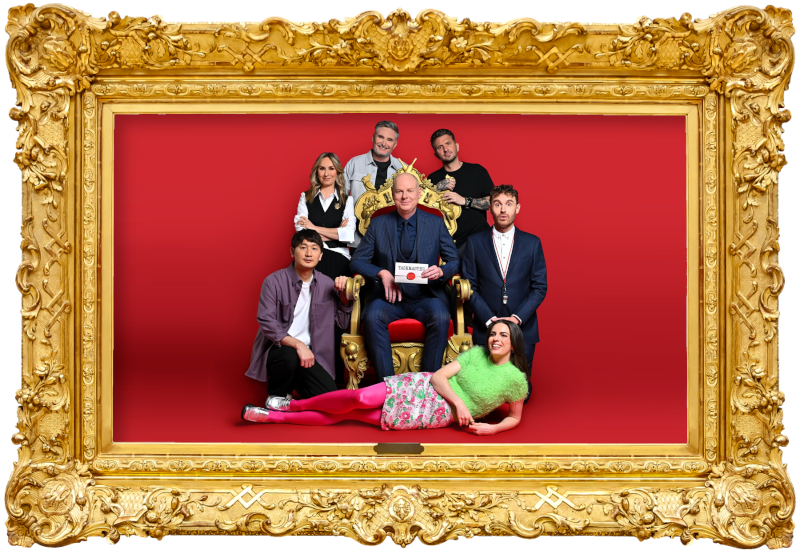
Series 4 brings a twist
Looking ahead to Taskmaster Australia Series 4, Gleeson is embracing the unexpected. “It’s the first time we’ve had someone who’s not a comedian. So we’ve got Lisa McCune,” he says. “The original show in the UK would quite often have actors or common people who they thought were funny, and they would be part of the challenge. So that brings a new dynamic.”
The line-up also includes comedy stalwarts and rising stars alike. “We’ve still got Dave Hughes, who I’ve known for a long time. We’ve been gigging together since the ’90s,” Gleeson says. “Then there’s Tim Warner. I mean, I used to watch him open, like, 20 years ago.”
“Then there’s Takashi Wakasugi, who is originally from Japan. I enjoyed him because he had a different way of approaching everything, and he made me realise how much we take Australian humour for granted.” Rounding out the cast is Emma Holland, “who is from a completely different generation,” Gleeson notes.
Branded chaos that keeps delivering
As Taskmaster Australia continues to build its identity, it’s quietly becoming a commercial sweet spot. It appeals to broad demos, leverages celebrity talent, and, most importantly, delivers consistently funny, sharable content that brands love to be near. With Gleeson at the helm, the series has managed to nail the delicate balance of local authenticity and global format.
He may not have watched Taskmaster UK until he was offered the role, but in typical Gleeson style, he’s now owning the format, without ever looking like he’s trying too hard. Because that’s the game. And he knows how to win.
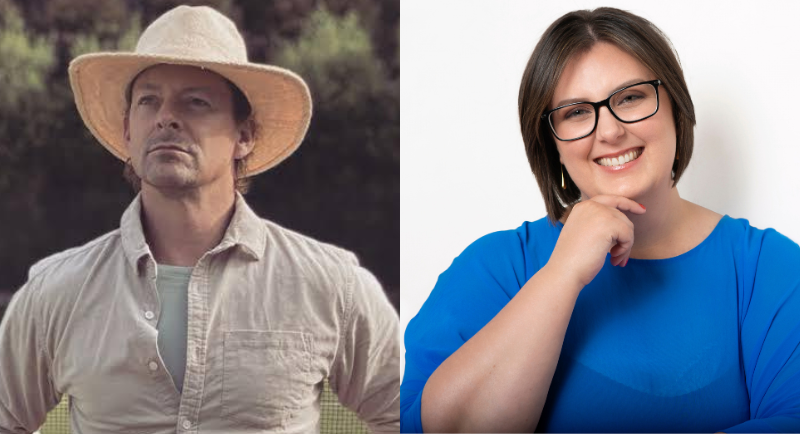
Robbie Brammall challenges marketers to make brands ‘unignorable’ at the CMO dinner hosted by The Emma Logan Project
Robbie Brammall, former chief marketing officer of Hobart’s notorious Museum of Old & New Art (Mona), challenged marketers to “find the unlock” when it comes to gaining support for brand investment from the C-Suite, and avoid becoming addicted to short-term ‘performance marketing crack’ at the launch of new marketer consultancy The Emma Logan Project.
“Now more than ever marketers need to make their brands both unignorable and memorable,” Brammall told a room full of marketers. “We all know the answer is not to just sell, sell, sell, but to consistently invest in brand as well. The hard bit is gaining support for that investment from the C-Suite, especially as budgets come under pressure. So, as an industry, how can we marketers better un-lock that support?”
Brammall noted marketers know what they need to do to build brands and grow the business but it’s their internal structures that too often push them in the direction of performance marketing, which prioritises short term revenue generation without a similar investment in long term brand building.
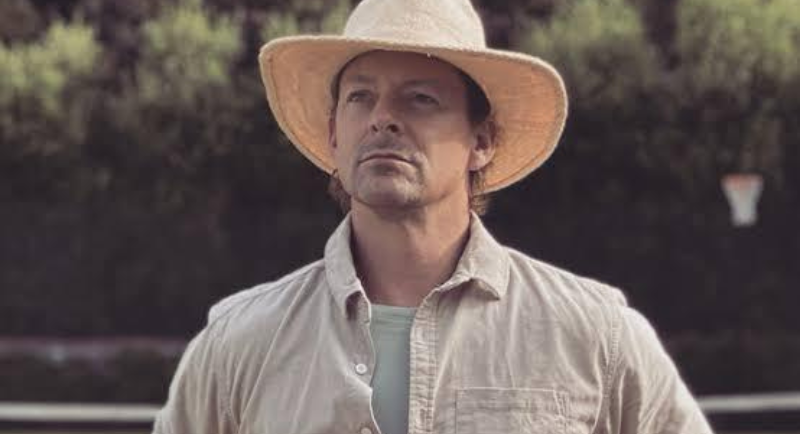
Robbie Brammel
“There’s never been more alignment on the science of effective marketing and brand growth,” said Brammall. “Thanks to the likes of Mark Ritson, Byron Sharp (and the Ehrenberg-Bass Institute), and Les Binet & Peter Field, marketers know to invest in the long and the short, but the reality is that many businesses can’t seem to get off the performance marketing treadmill.
“I know when I became Mona’s CMO there were absolutely parts of the business that were purely on the performance marketing crack. It was the rhythm of those businesses. It took time to win internal support for investment in brand, and then it took runs on the board to convince them it was working,” he said.
Brammall made the comments giving the inaugural CMO address at the launch event for new bespoke marketer-focused consultancy The Emma Logan Project, where he also challenged the marketers in the room to consider a culture of asymmetric risk taking – take lots of risks with a high upside but low downside – as a pathway to growth and above expectation returns.
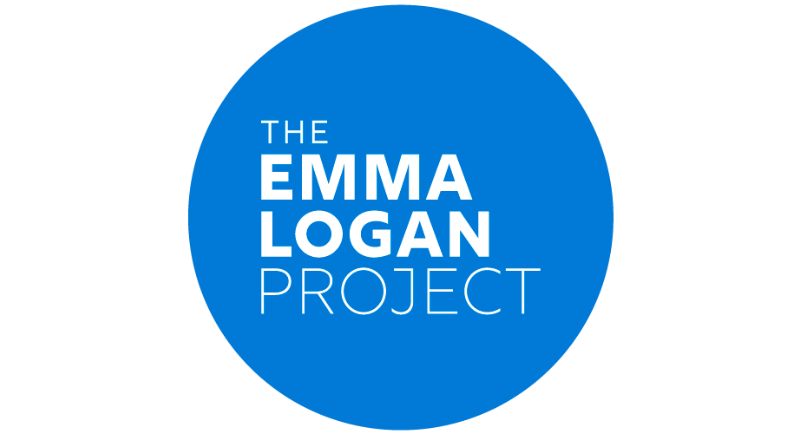
“We live in a marketing world where algorithms are the taste-makers, where imitation is the only source of innovation, and where progress is measured in relentless micro optimisations. The result? Consumers end up with a tsunami of sameness, a blancmange of beigeness,” he said. “At Mona we called this ‘the drift to the middle’, and it was to be avoided at all costs.
“Working for David Walsh (Mona’s owner) I learnt that this was his unlock – he was hard-wired to take risks that would keep Mona from drifting to the middle, so applying that philosophy to Mona’s marketing instantly gained his support.”
The former Mona CMO, who has now launched his own marketing and creative consultancy Brandango, spoke about making Mona’s first ever brand campaign and how he secured Walsh’s buy-in.
“My challenge was how can I use paid media to grow awareness of Mona, but in a way that didn’t totally betray Mona’s counter-culture ‘show don’t tell’ roots,” Brammall told the room.
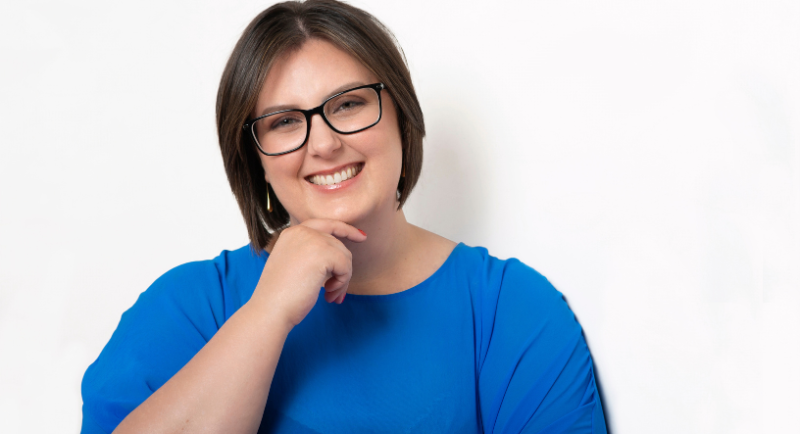
Emma Logan
“So, what we did was something hugely ill-advised, potentially libelous and the complete opposite of what tourism brands would normally do. We went to TripAdvisor, found our worst reviews, and then turned them into Mona’s first brand campaign. David’s response? ‘I hate advertising but I like these, because they tell the f***ing truth.’ Visitation went up 25% and the only people who threatened to sue us were Pink Floyd – asymmetric upside.”
Emma Logan said of Brammall’s speech: “I can’t thank Robbie enough for his insights and unique perspective. He didn’t just challenge the room, he shared real-world stories about what it takes to build one of Australia’s boldest brands.
“That spark of an honest conversation among marketers is exactly what The Emma Logan Project is all about: bringing together the best and brightest marketing leaders, helping them step up, shape their voice, and build magnetic executive brands that make a meaningful impact.”
Marketer consultancy The Emma Logan Project plans to continue hosting quarterly CMO dinners to help drive positive discussions among marketers.
Top image: Robbie Brammall and Emma Logan
Social Media
Government defends YouTube age carve-out, citing ‘community sentiment’
As Sam Buckingham-Jones writes in The Australian Financial Review, the exemption stands in contrast to sweeping age restrictions set to hit TikTok, Instagram, Facebook and X.
In Senate responses, the Department of Communications said the decision reflects YouTube’s role as a learning tool, aligning with public opinion rather than lumping it in with platforms seen as purely social or entertainment-based.
Streaming
Comedy Central exits Fetch TV as Paramount reshapes local channel strategy
As Kyle Laidlaw writes in TV Blackbox, the move, effective 31 March, comes as part of a broader strategic shake-up by Paramount as it reassesses how its brands are distributed in the Australian market.
While Comedy Central content won’t vanish entirely, with titles shifting to 10 Peach, 10 Play and Paramount+, the channel’s departure signals a trend towards consolidating content under owned platforms and reducing third-party licensing.
Streamers tighten local spend as producers brace for leaner years
As James Manning writes in The Australian, once eager to splash cash on Aussie originals, platforms like Netflix and Prime Video are now more cautious, and the ad market is watching closely.
The pivot follows a 29% drop in screen production spend, reported by Screen Australia, with insiders suggesting the boom of recent years was partly driven by a desire to stave off local content quotas.
Television
Trust still matters as Aussies turn to TV and digital for news
As David Knox reports in TV Tonight, 50% of adults tuning into FTA and 46% relying on websites and apps, legacy broadcasters and established publishers continue to hold valuable ground in a fragmented media market.
For advertisers, trust is currency, and SBS and the ABC top the rankings.
Advertising
As political ad spend shifts online, truth takes a back seat
As Toby Ralph writes in The Australian, Hi-viz photo ops and punchy slogans will flood screens, but behind the scenes, a less visible shift is shaping the landscape: the migration of ad dollars from traditional media to digital platforms.
While TV, radio and print still carry political messages, much of the $15 billion ad market now flows through social media, where oversight is patchy and fact-checking is optional.
Brands
Family feud spills into court as Cue Clothing faces succession showdown
The dispute exposes fractures within one of Australia’s best-known fashion dynasties, and throws the future of the brands into question, reports Carrie LaFrenz in The Australian Financial Review.
Levis claims he was ousted from the company in 2024, despite years of leadership and personal investment, including propping up Dion Lee with a $20 million family loan before it fell into administration.
